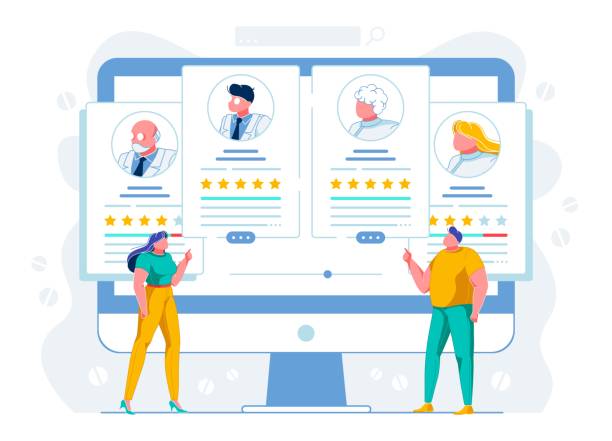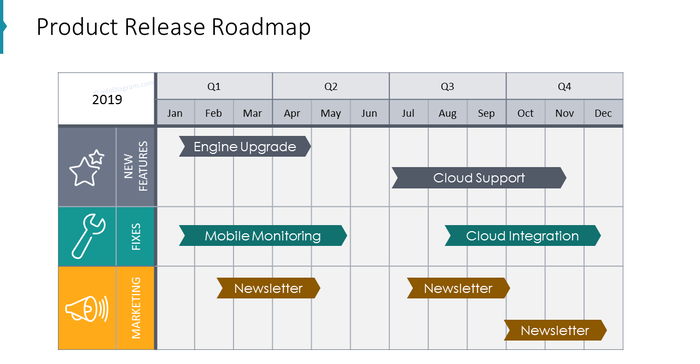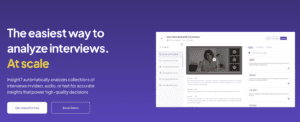Maximizing B2B Customer Segmentation for Product Roadmap Development
-
Bella Williams
- 10 min read

“I cannot give you a formula for success, but I can give you a formula for failure, which is: Try to please everybody.” – Mark Twain
Mark Twain’s wisdom holds a valuable lesson for B2B product development. One of the pivotal rules for developing a robust product roadmap is recognizing that not all customers are created equal. Each customer brings their own unique set of needs, challenges, and aspirations. Acknowledging this diversity is the first step towards crafting a successful B2B product roadmap. In this guide, we delve into the strategies and practices that empower proactive product teams to build a thriving B2B product roadmap.
 Understanding Customer Segmentation
Understanding Customer Segmentation
Customer segmentation involves dividing your target market into distinct groups based on shared characteristics, behaviors, and preferences. These groups, known as segments, allow you to better tailor your product offerings and strategies to meet the specific needs of each segment. By focusing on the unique requirements of different customer groups, you can create more personalized and relevant solutions, which in turn leads to higher customer satisfaction and loyalty.
Customer segmentation gives direction for tailored product development. To truly understand your customers, you need to categorize them into distinct groups based on shared characteristics and behaviors.
Segmentation can be based on various factors, such as:
1. Data-Driven Analysis: Gather and analyze data from various sources, including user interactions, surveys, and market research. Uncover patterns that reveal differences and commonalities among your customer base.
2. Demographics and Psychographics: Categorize customers based on demographics (age, gender, location, industry) and psychographics (personality, values, interests). This provides a foundation for personalized targeting.
3. Behavioral Segmentation: Examine usage patterns, purchase history, engagement metrics, and technology adoption. This helps identify groups with similar behaviors and needs.
4. Needs and Pain Points: Pinpoint the challenges and pain points your product can address. Group customers facing similar issues into segments to focus your efforts effectively.
5. Preferences and Feedback: Gather insights on features, functionalities, and benefits that resonate most with specific segments. Leverage feedback to refine your understanding.
The Power of Targeting
Once you’ve successfully segmented your customer base, the next step is to identify the segments that align most closely with your product’s value proposition. This process, known as targeting, involves selecting the segments that offer the greatest potential for growth and align with your business objectives.
Targeting is essential for several reasons:
- Resource Optimization: Resources are finite, and directing them toward the right segments maximizes your efficiency and impact.
- Personalization: Tailoring your product and marketing strategies to specific segments enhances relevance and resonance.
- Market Positioning: Focusing on segments that align with your product’s strengths helps establish a strong market position.
- Customer Engagement: Engaging with the right segments fosters deeper relationships and loyalty.
Prioritizing Target Segments
Prioritization is key. When product teams can effectively segment their customer base, they should then identify the segments that offer the most potential and align with their product’s strengths and business objectives.
Some key criteria to help in prioritization include:
- Revenue Potential: Evaluate the revenue potential of each segment. Focus on those that are likely to generate substantial returns on your investment.
- Product Alignment: Assess which segments align most closely with your product’s core strengths and unique value proposition. This helps you differentiate in the market.
- Growth Opportunities: Identify segments in growth stages or undergoing significant industry shifts. These segments present untapped opportunities.
B2B Customer Segmentation Methods
- Demographic Segmentation: In the B2B space, demographic segmentation involves categorizing businesses based on specific characteristics such as industry, company size, annual revenue, and location. This method allows B2B companies to target businesses that match their ideal customer profile. For example, a software company may prioritize targeting medium-sized manufacturing companies in the Midwest for a particular product offering.
- B2B Tier Placement: B2B tier placement, also known as account-based segmentation, classifies businesses into tiers based on their potential value to the company. This method is particularly useful for companies with limited resources as it helps prioritize efforts. For instance, Tier 1 customers might include large enterprises with significant revenue potential, while Tier 2 and Tier 3 may consist of mid-sized and smaller businesses, respectively. Each tier receives a distinct level of attention and customized services or products.
- Demand-Based Segmentation: Demand-based segmentation involves categorizing businesses according to their current needs and buying intentions. This segmentation method is highly dynamic, as it focuses on understanding where each business is in its buying journey. For example, a supplier of office equipment might target businesses that have recently expanded or are relocating their offices, indicating a heightened demand for their products.
It is crucial to remember that these methods can be combined to create a comprehensive understanding of the target market. A business may use demographic segmentation to identify ideal industry targets, B2B tier placement to prioritize key accounts within those industries, and demand-based segmentation to tailor offerings to the immediate needs of those key accounts. This multi-faceted approach allows B2B companies to efficiently allocate resources and develop highly relevant marketing strategies.
How To Develop an Effective B2B Product Roadmap with Customer Segmentation
A successful B2B product roadmap is a strategic blueprint that outlines the development and evolution of a company’s products or services. Customer segmentation plays a pivotal role in creating an effective B2B product roadmap, ensuring that your offerings are aligned with the diverse needs and preferences of your target audience. Here’s how to develop a successful B2B product roadmap with customer segmentation:
1. Customer Segmentation Analysis
Before creating a product roadmap, conduct a thorough analysis of your B2B customer segmentation. This analysis should include demographic, firmographic, and behavioral insights. Understand who your ideal customers are, what industries they belong to, and their specific pain points and needs.
2. Prioritize Segments
Not all customer segments are of equal importance to your business. Identify and prioritize the segments that have the highest revenue potential, growth opportunities, or strategic importance. Consider using B2B tier placement or account-based segmentation to categorize customers into tiers, allowing you to allocate resources accordingly.
3. Customize Product Features
Tailor your product roadmap to address the unique needs of each prioritized customer segment. Different segments may require distinct features or modifications to your existing offerings. This customization ensures that your products align with the specific requirements of each segment.
4. Set Clear Objectives
Define clear and measurable objectives for each segment. These objectives should be aligned with your business goals and the unique needs of each segment. For example, if you’re targeting the healthcare industry, your objective might be to improve data security features to meet compliance requirements.
5. Set Timeline and Milestones
Develop a timeline for product development and release. Establish milestones that correspond to the product features or improvements specific to each customer segment. This timeline will help your team stay on track and ensure that product updates align with your roadmap.
6. Feedback Loops
Integrate feedback loops into your product roadmap. Engage with your B2B customers regularly to gather input and assess the effectiveness of your product updates. This ongoing feedback will inform future iterations and ensure that your offerings remain relevant.
7. Resource Allocation
Allocate resources in line with the prioritization of customer segments. Invest more heavily in segments with higher potential returns and focus on meeting their specific needs. Ensure that your budget, development team, and marketing efforts are aligned with your segmentation strategy.
8. Testing and Iteration
After product features are developed, test them with representative customers from each segment. Use their feedback to refine and iterate on your offerings. This iterative process ensures that your products continue to meet the evolving needs of your customers.
9. Communication and Marketing
Craft tailored marketing and communication strategies for each customer segment. Highlight how your product roadmap addresses their unique pain points and needs. This ensures that your customers are aware of the value you provide.
10. Monitoring and Evaluation
Continuously monitor the performance of your products within each segment. Measure the success of your product roadmap by tracking key performance indicators, such as customer satisfaction, retention rates, and revenue growth. Adjust your roadmap as needed based on the results.
By integrating customer segmentation into your B2B product roadmap, you can create a focused, customer-centric approach that drives product success and business growth. This strategy not only strengthens your relationship with customers but also enhances your competitiveness in the B2B market.








